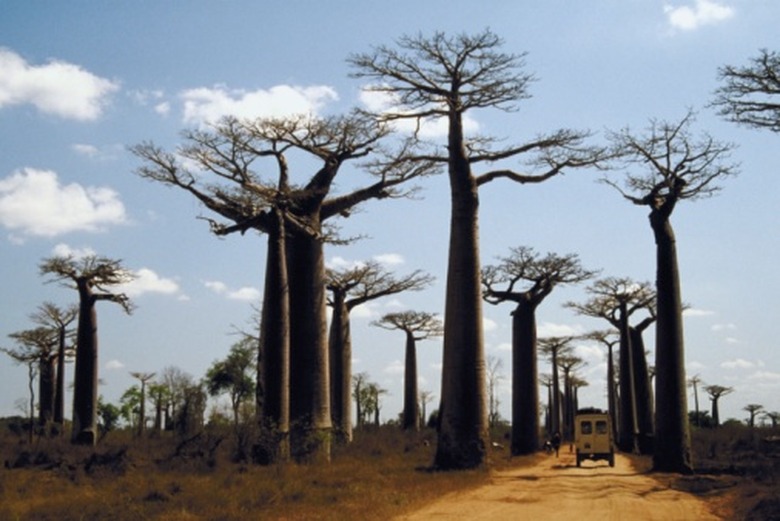How To Grow Boab Trees
The boab (Adansonia), often called the "Tree of Life," is a native to Australia, Madagascar and Africa. The large succulent provides food, shelter and water for people and animals, and almost every part of it has a use.
Things Needed
- Seed tray with drainage holes
- Small nippers
- File
- Organic potting soil
- Coarse sand
- Cup
- Hot tap water
- Paper towel
- Small pots with drainage holes
- Organic compost
The boab (Adansonia), often called the "Tree of Life," is a native to Australia, Madagascar and Africa. The large succulent provides food, shelter and water for people and animals, and almost every part of it has a use. Its unusual shape, with a squat, bulbous base and short branches that mimic roots, makes it a popular addition to specialty gardens. Boab is hardy and very drought-tolerant once established, but does not tolerate freezing temperatures. It thrives outdoors in USDA hardiness zone 10, but also does well grown indoors as an ornamental houseplant. Proper seed germination is the key to successfully growing a boab tree.
Step 1
Prepare your seed tray for planting. Mix equal parts of organic potting soil and coarse sand. Wet with water until damp but not dripping. Fill the tray to the top with the soil and sand mixture, then press down on the soil firmly.
- The boab (Adansonia), often called the "Tree of Life," is a native to Australia, Madagascar and Africa.
- The large succulent provides food, shelter and water for people and animals, and almost every part of it has a use.
Step 2
Scarify the boab seed to expose the endosperm (the white layer beneath the seed shell). Use the nippers to snip just through the seed shell, without cutting into the seed. Alternately, use the file to wear through the shell and expose the endosperm. Do not scarify the ends of the seed; aim for the fattest area around the middle of the seed. Only one small section needs to be exposed to allow the seed to break through. In the wild, this process occurs when animals eat the seeds.
Step 3
Fill the cup with hot tap water. Add the seeds and allow them to soak overnight. It is a good idea to use more seeds than the number of trees you want, in case some of the seeds do not germinate. Remove the seeds from the water and place them on a paper towel to allow them to dry for a day or two.
- Scarify the boab seed to expose the endosperm (the white layer beneath the seed shell).
- Use the nippers to snip just through the seed shell, without cutting into the seed.
Step 4
Press your finger to a depth of 1 inch into the soil in the seed tray. Place a seed in the hole and push soil over the top to cover it. Repeat for each seed. Water lightly until the soil is damp but not wet.
Step 5
Place the seed tray in a warm area that receives filtered light. An ideal location is a few feet from an eastern- or western-facing window where the temperature is at least 60 to 65 degrees F.
Step 6
Water the seed tray only when it is barely moist. Do not let the tray sit in water, to avoid root rot. Do not place a cover over the tray, and avoid excess humidity. The seeds will germinate after about a week, and sprouts should be visible within two to six weeks. Any seeds that have not sprouted by 18 days are not likely to do so.
- Press your finger to a depth of 1 inch into the soil in the seed tray.
- Place the seed tray in a warm area that receives filtered light.
Step 7
Transplant the seedlings into small pots when they are approximately 2 inches tall. Fill the pots with equal amounts of organic potting soil, coarse sand and organic compost. Place the pots in an area that receives moderate light. Continue to water lightly, only when needed.
Tip
Transplant your boab outdoors if desired, after the seedling is at least four months old. The area should be sunny, well-drained and warm. Boab trees are often trained as indoor bonsai trees.
Warning
Avoid overwatering. As succulents, boabs are prone to root rot.
